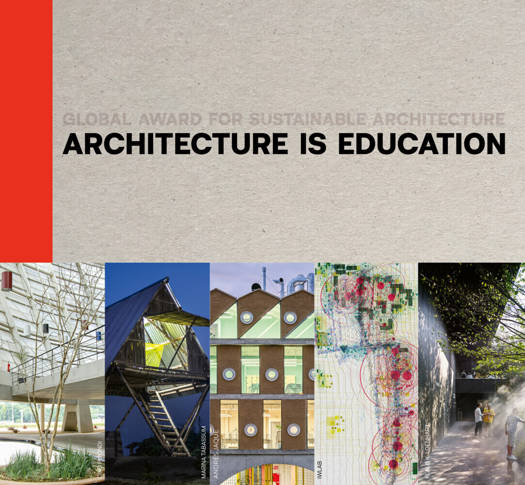
- Retrait gratuit dans votre magasin Club
- 7.000.000 titres dans notre catalogue
- Payer en toute sécurité
- Toujours un magasin près de chez vous
- Retrait gratuit dans votre magasin Club
- 7.000.0000 titres dans notre catalogue
- Payer en toute sécurité
- Toujours un magasin près de chez vous
Architecture Is Education
Global Award for Sustainable Architecture
Marie-Helene Contal, Jana Revedin
Livre relié | Anglais
47,45 €
+ 94 points
Description
Education in architecture is a driving force behind the sustainability principles endorsed by the Global Award for Sustainable Architecture. This book illustrates how education-with the core element of knowledge transfer-aligns with the principles of the award through four key educational categories, and how the methodological approaches of the winners relate to these categories. The volume at hand, Architecture Is Education, emphasizes the connection between the various topics of education and the principles of sustainability in architecture. How can education contribute to sustainability, among other things, and how does education positively influence the future outcome in the architectural field? Which practices and methods are promising, forward-looking, and necessary for the development of the discipline? The publication is based on interviews with the five award-winning architects, with a focus placed on the four categories in the field of education outlined below and on selected underpinning projects by this year's winners. It provides the reader with a framework for approaching education through the lens of the Global Award for Sustainable Architecture. Experimentation in architecture involves projects that try out new and creative ways to navigate toward innovation processes and new paths. Architects in this category approach projects as experiments by testing new technologies, materials, and designs. In doing so, they push the boundaries of traditional architecture and contribute to the transfer of knowledge through new experiences. Dissemination, in the field of architectural education, refers to architects sharing sustainable knowledge with a wide audience. They do so by sharing good practices, conducting research, releasing publications, attending conferences, or creating easy-to-understand educational materials. These efforts contribute steadily to spreading awareness of the principles of sustainable architecture. Consulting in architectural education is about practitioners sharing their knowledge and skills to guide others in the industry. This may involve advising individuals or institutions on a range of sustainable architecture topics. Guidance, as part of education, ensures that specialist know-how is passed on effectively. The advisors' knowledge transfer should positively influence decision-makers, especially when such decisions are made by nonexperts or people not involved in the discipline. Training in architectural education prepares students with the practical skills and hands-on knowledge needed for sustainable architecture. This process includes workshops, courses, and participation in initiatives that practice sustainability in construction and convey its importance. By educating the next generation of architects and students in related fields, training is becoming an increasingly important instrument for learning how to put theory into practice. Architecture Is Education examines the methods, tools, and approaches within four educational categories, illustrating how architects act as catalysts for education in sustainable thinking and action. By presenting the different approaches of the five award-winning architects, the book provides a methodological tool kit demonstrating the importance of education in the context of sustainability. By drawing insightful conclusions from the interviews and the presentation of the architectural projects, the volume facilitates the identification of parallel patterns in the architects' working methods across continents. The practical discourse goes beyond mere documentation, creating a dialogue that draws further insights from the various concepts developed by the architects presented in this volume.
Spécifications
Parties prenantes
- Auteur(s) :
- Editeur:
Contenu
- Nombre de pages :
- 160
- Langue:
- Anglais
Caractéristiques
- EAN:
- 9783966800280
- Date de parution :
- 22-04-24
- Format:
- Livre relié
- Format numérique:
- Genaaid
- Dimensions :
- 259 mm x 239 mm
- Poids :
- 947 g

Les avis
Nous publions uniquement les avis qui respectent les conditions requises. Consultez nos conditions pour les avis.






